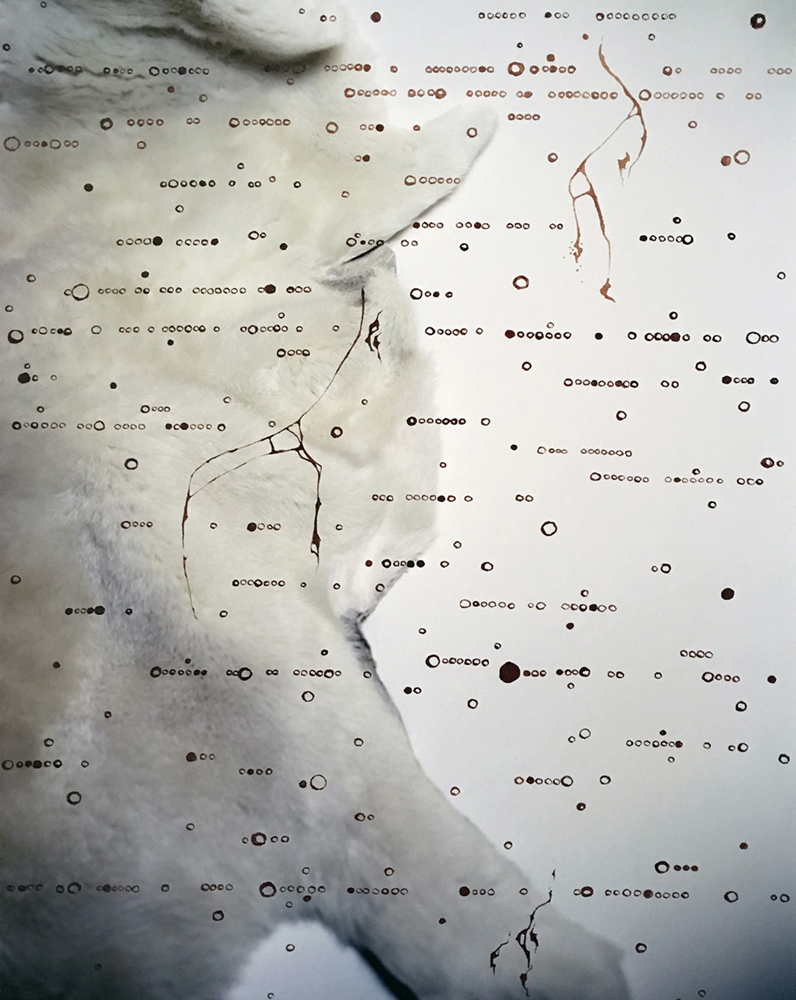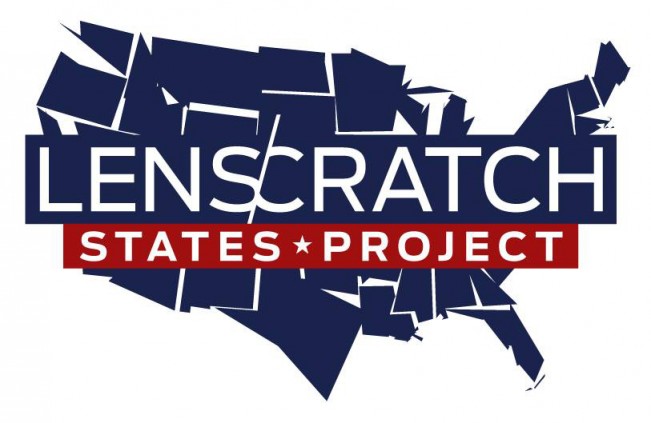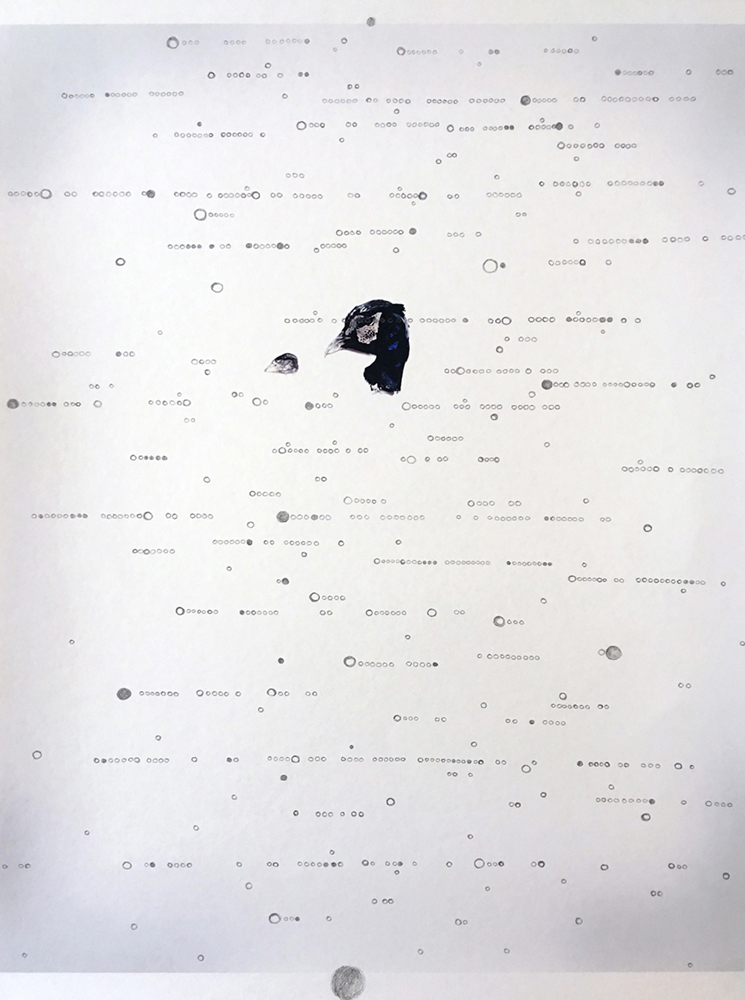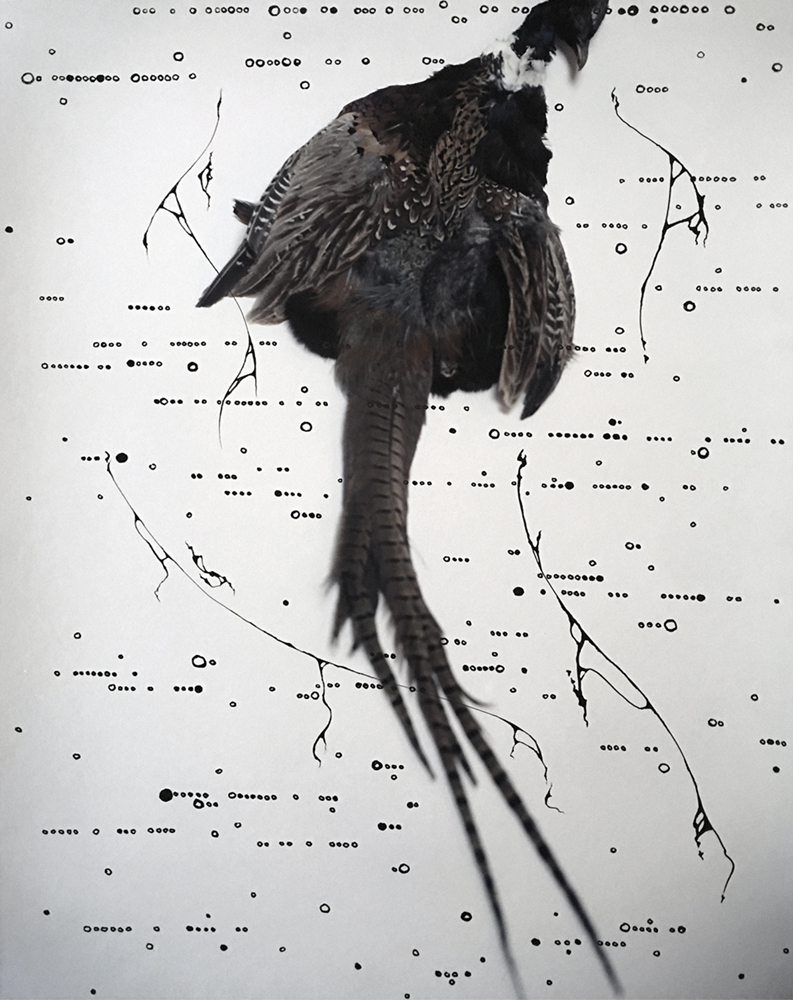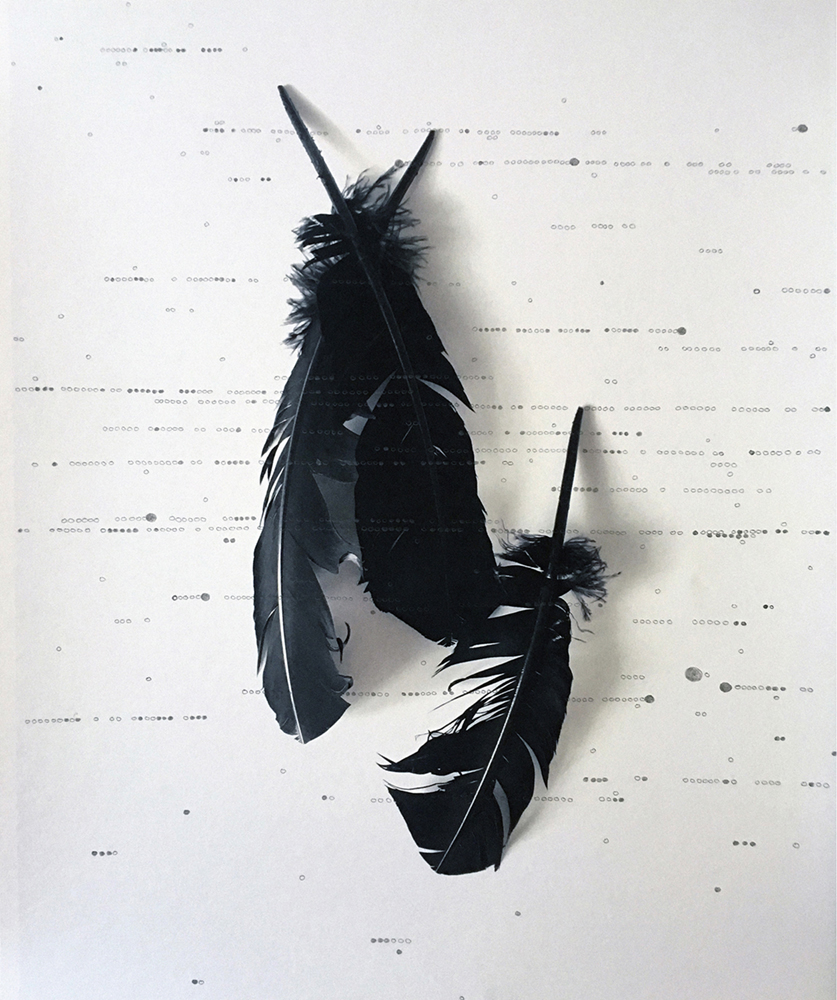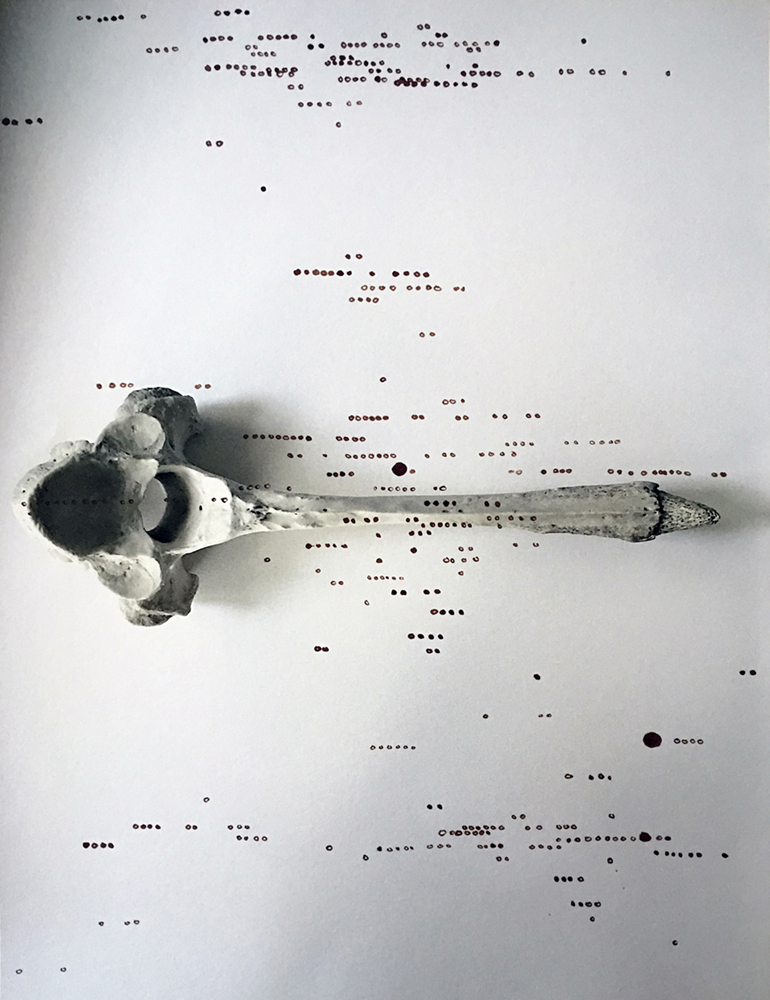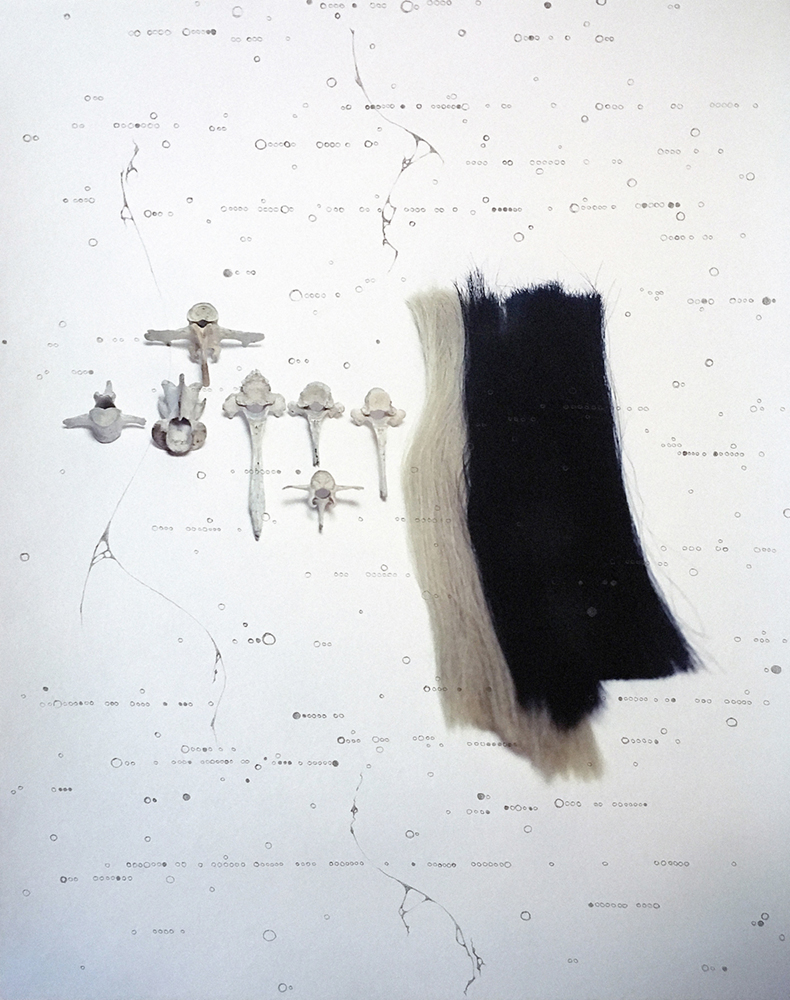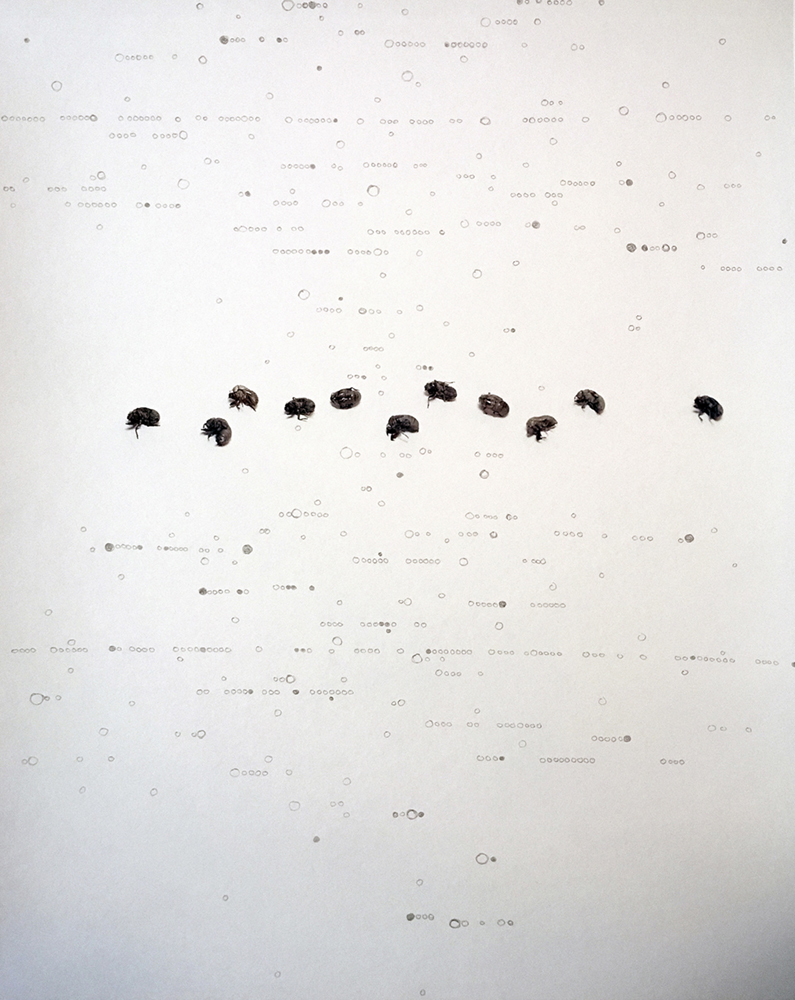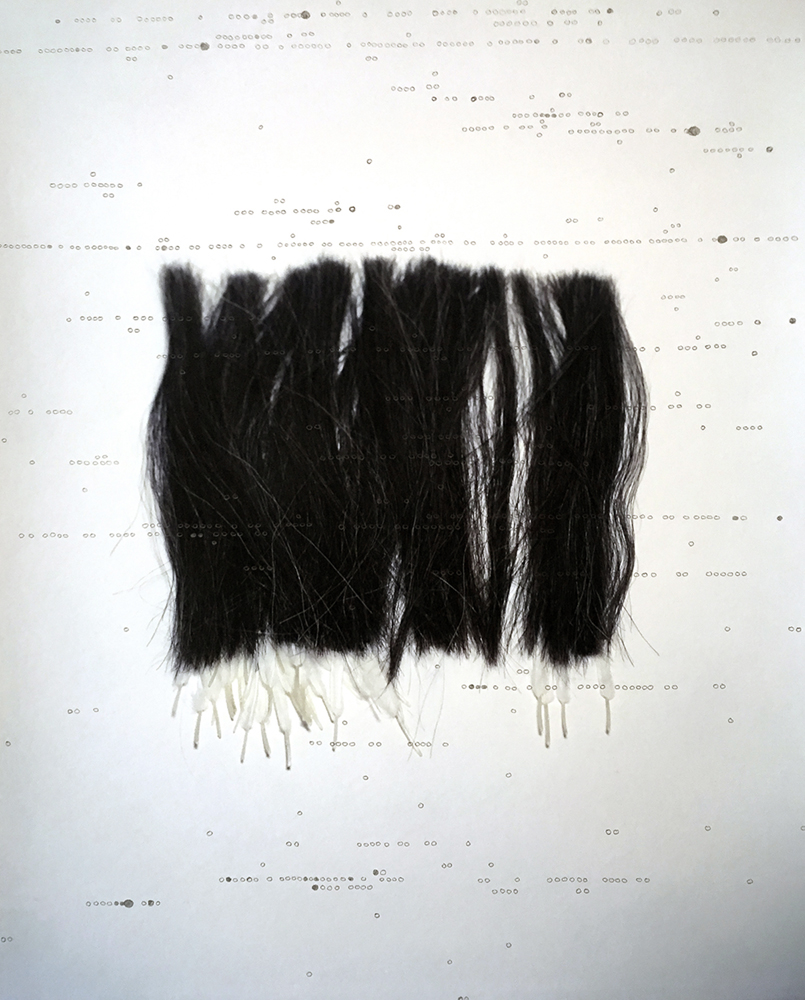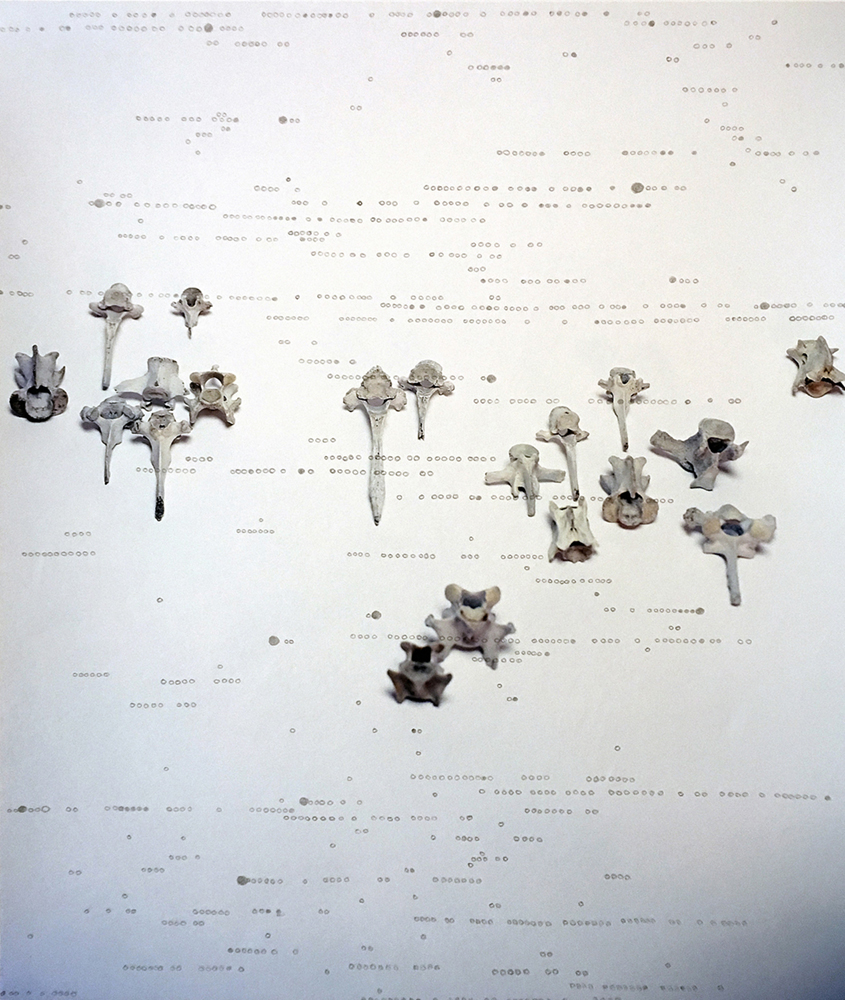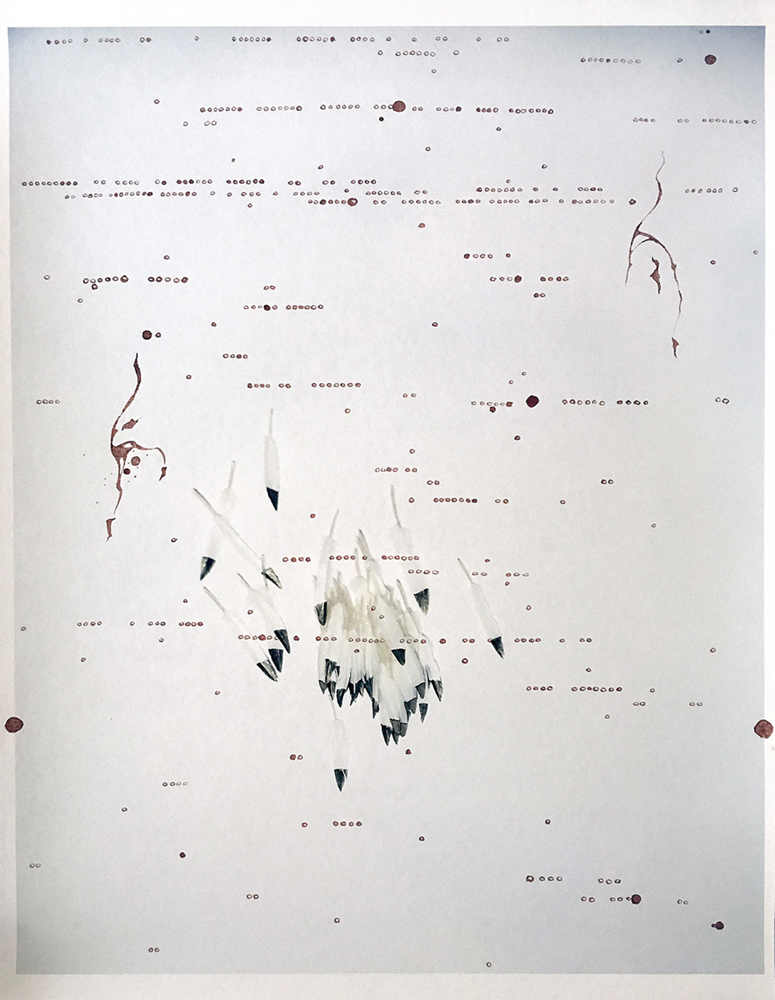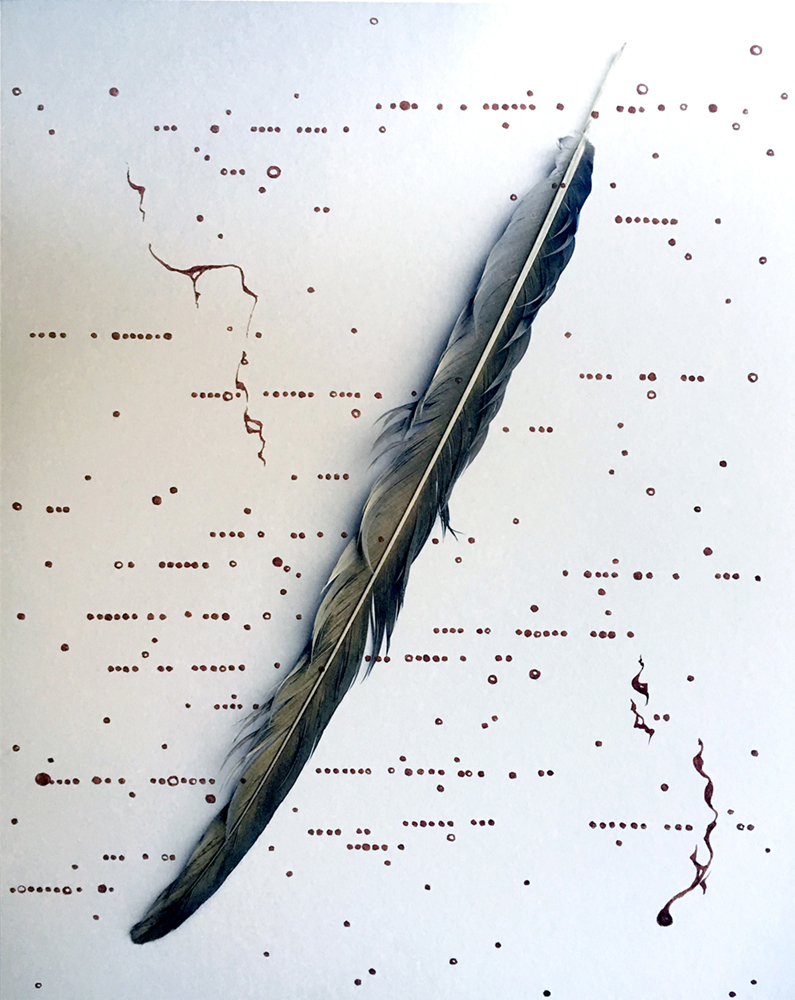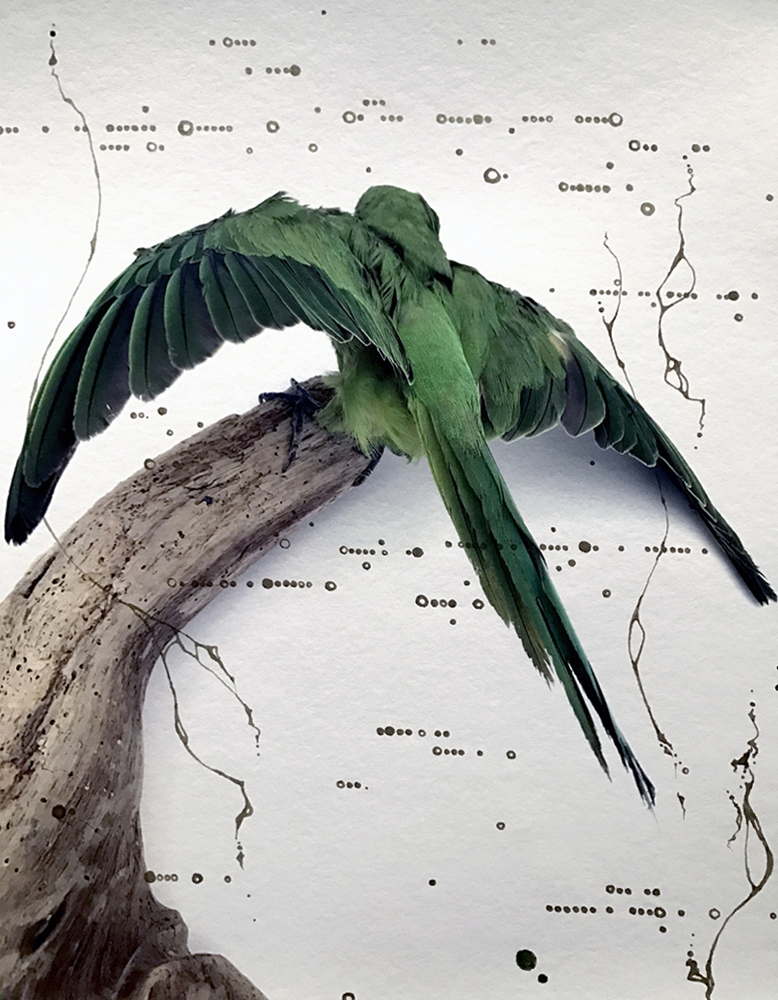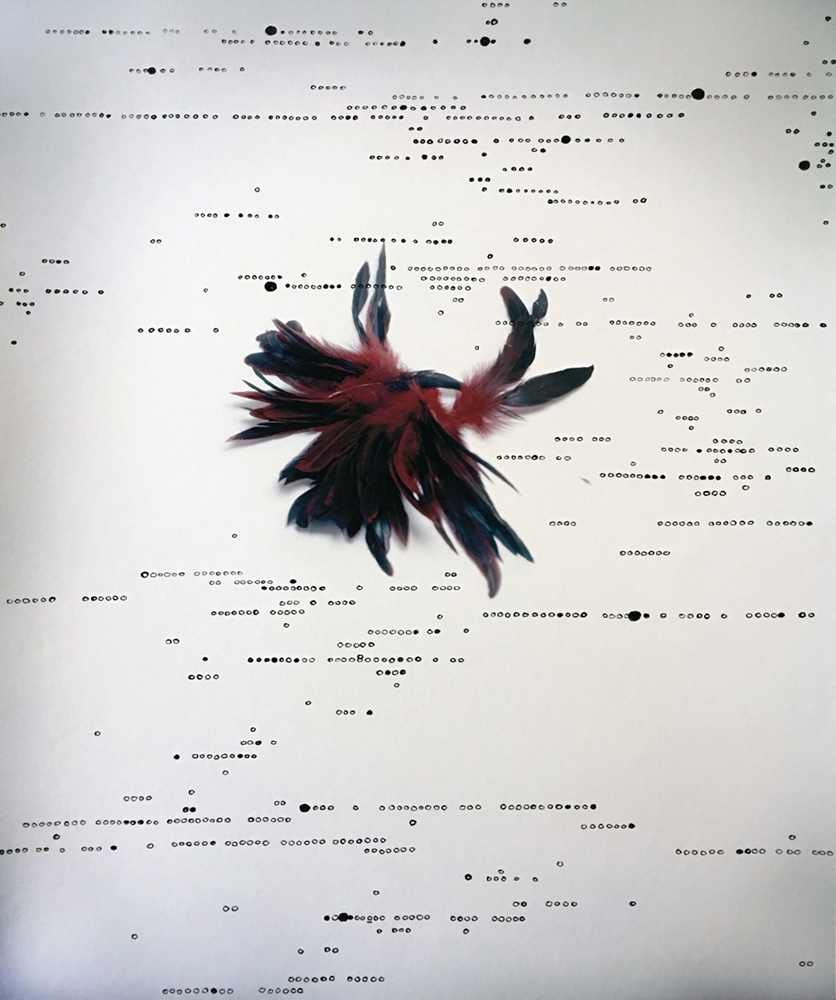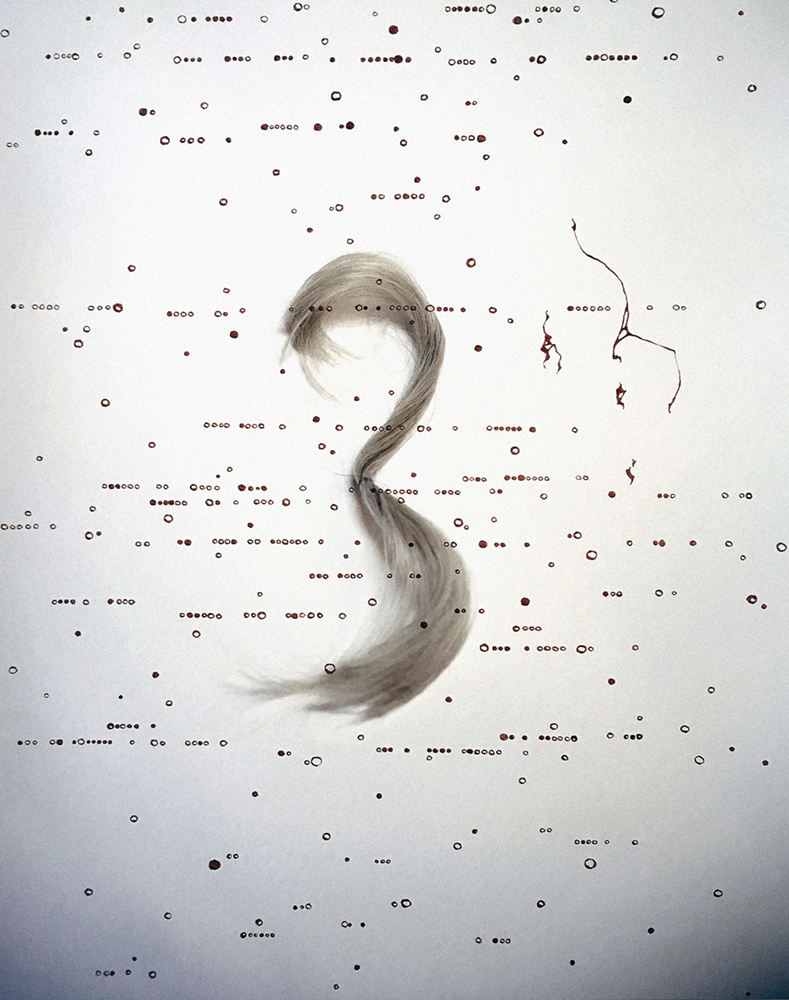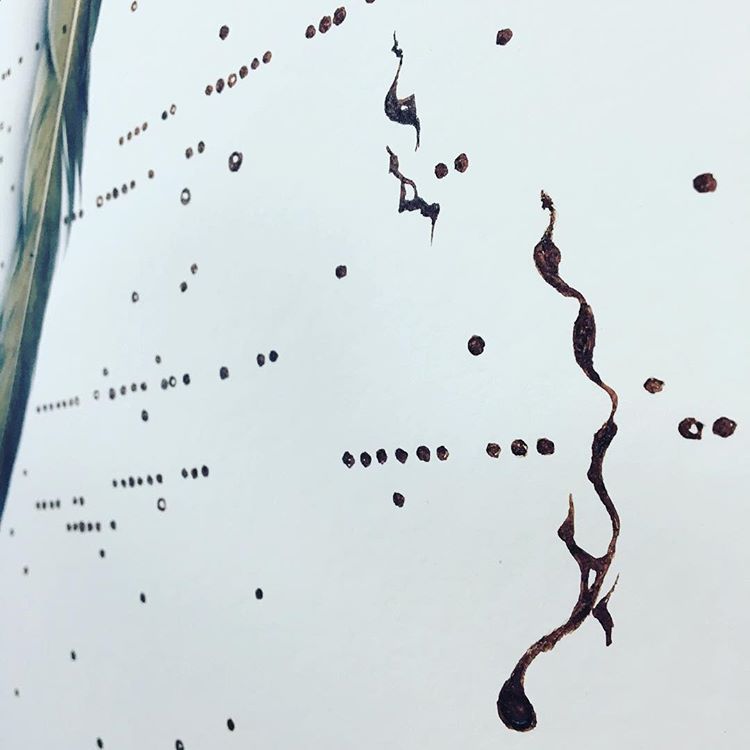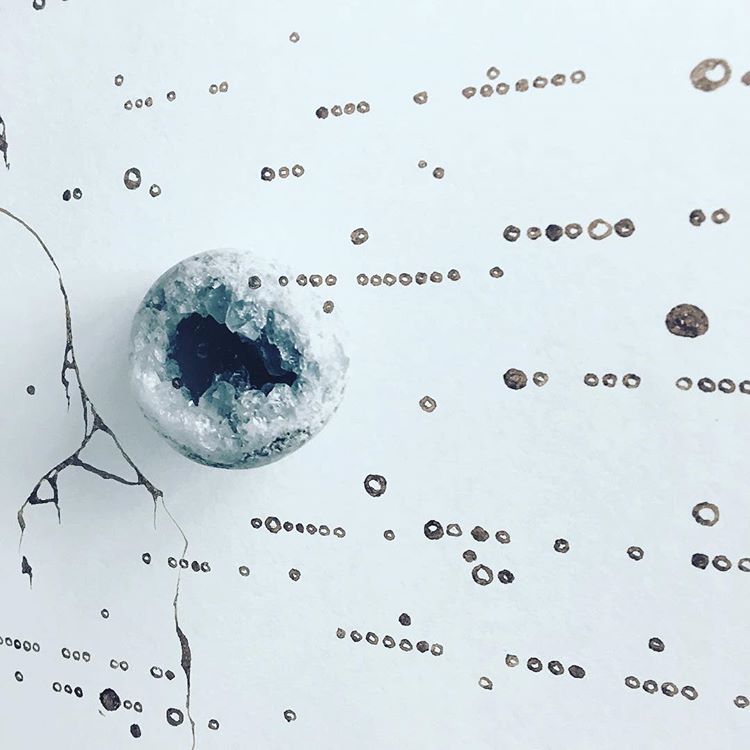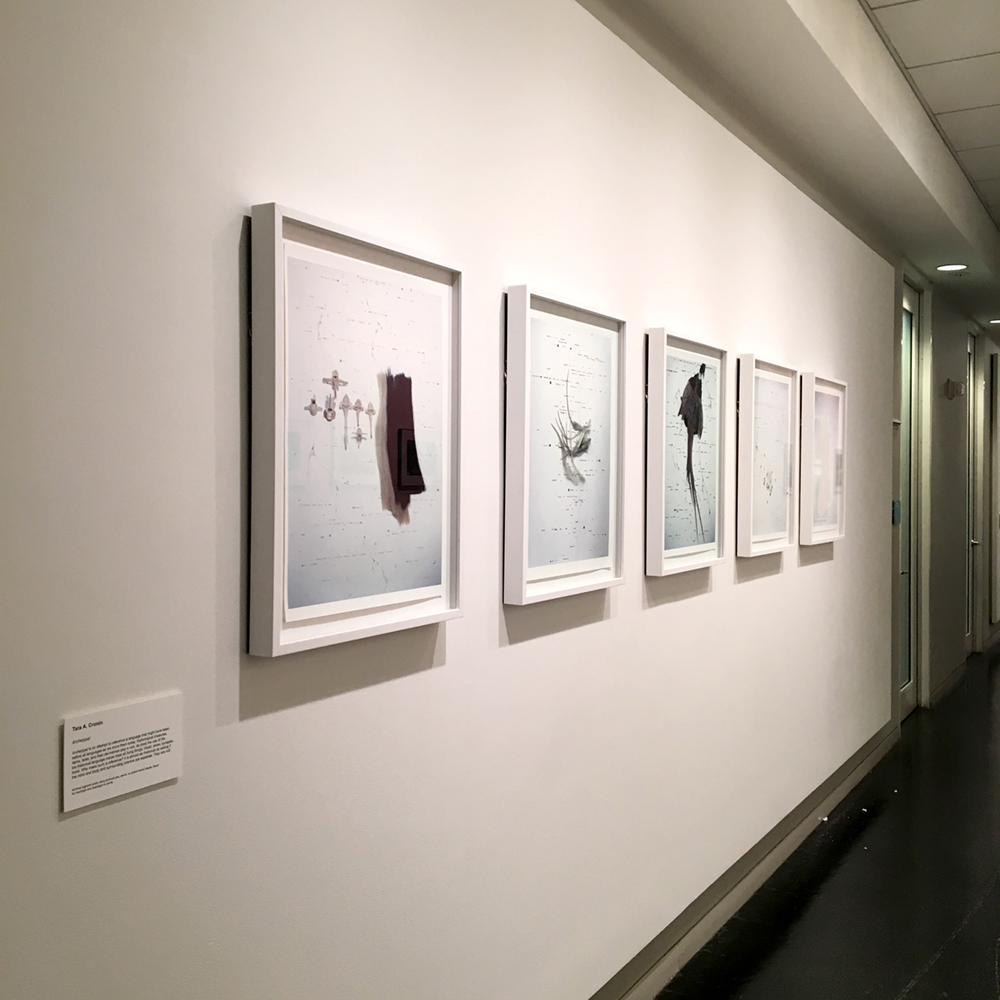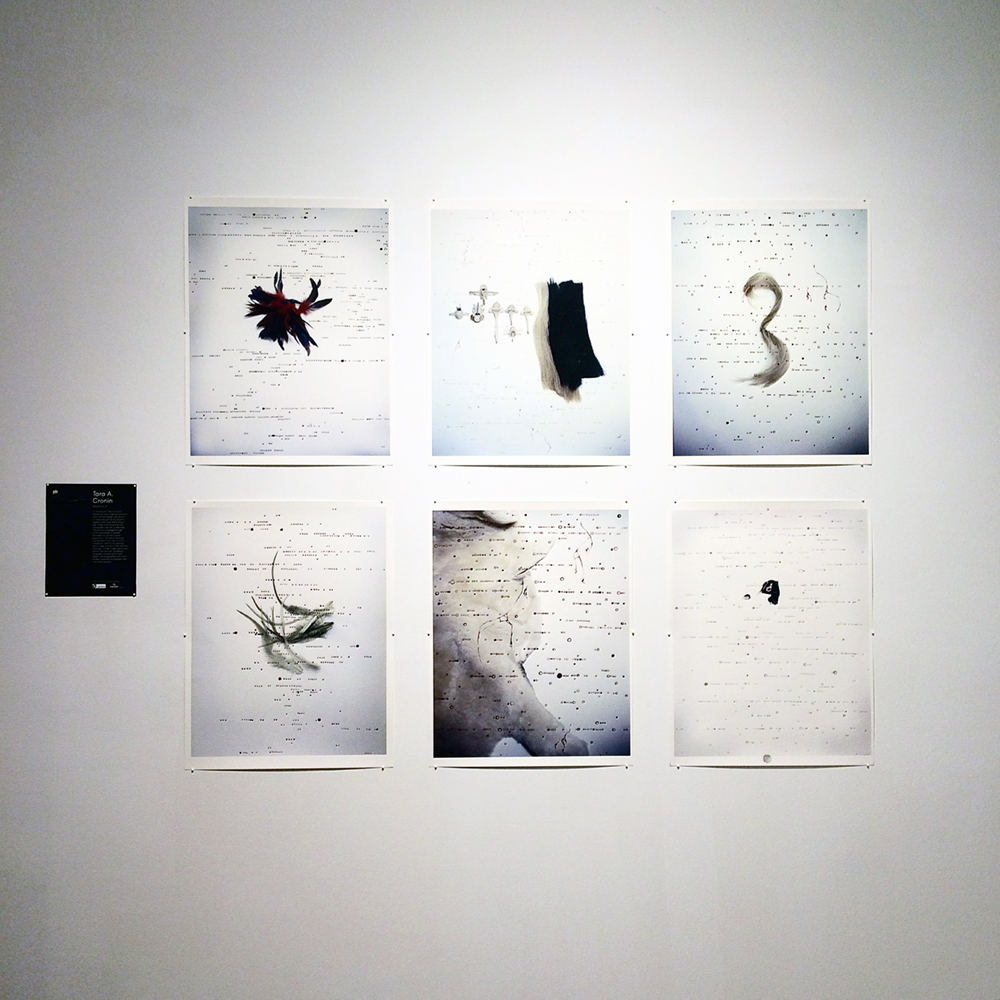Tara Cronin: The States Project: Hawaii
I met Tara Anne Cronin a number of years ago when she was living in New York and reconnected again this year at the Photo Alliance Reviews in San Francisco. I was surprised to hear she was living in Hawaii and where life had taken her. Tara is remarkable in her ability to reinvent, explore, and consider our planet and her own life, and as she states, “promote the idea of Science and Art as being symbiotic”. The interview that follows gives the reader some insights into her unique journey. In addition to a myriad of other talents, Tara is a significant book maker–one recently acquired by The Benaki Museum’s Archive and Collection from the Athens Photo Festival and another included in the “AWAKE!” Reading Room with the Image Text Ithaca Symposium, at Ithaca College, Ithaca, NY. We are lucky to have her range of interests brought to her role as the Hawaii States Project Editor.
Tara Anne Cronin is an artist and writer focusing primarily on photography, works on paper, installation and book-arts. She received a BA in Writing from New School University, an MFA from the ICP-Bard Program, and has Twice-earned the ICP Director’s Fellowship Award.
Holding various co-patents with partner and scientist Ed Chen, one includes a unique polymer made from materials used in Tara’s artwork, which, after scientific research demonstrated itself to be the first synthetic membrane to effectively remove CO2 from air and convert it into useful materials. This resulted in a solo show in the Museo de la Ciudad in Querétaro, Mexico in 2012, and a guest-speaker-invitation plus exhibition participant invitation at the American Association for the Advancement of Science in Washington DC.
Having exhibited throughout New York City, North America and Internationally, recent exhibitions include a dual group show at the International Center of Photography and at Photoville in New York City, titled “The Future Perfect,” this Fall 2016. In July Tara was part of a six-person exhibition, “The Curator,” with PDN at Foley Gallery in New York, NY. She was a guest-artist-speaker at the 2016 September NY Photo Salon held at the School of Visual Arts, and an exhibition participant at the East Hawai’i Cultural Center/HMOCA in Hilo, HI, held from June-July 2017. She is always excited to have her handmade artist-books included each year since 2010 for the past seven years and counting in the New York Art Book Fair, at MoMa/PS1 in Long Island City, NY.
Through her practice Tara hopes also to promote the idea of Science and Art as being symbiotic. She and Ed took on the oldest Organically Certified Kona coffee farm in 2014/15 to apply their agricultural technology addressing Climate Change and she is now a coffee roaster and farmer as well. Tara is currently a member of the board of directors of the Society for Kona’s Education and Art.
Tara loves to count, collect, and laugh daily. She is nomadic, oscillating between New York, New Jersey, and Hawai’i in the United States.
Archetypal
Here, I work primarily with my pen, pencil, my own blood, and with reconstituted chlorophyllin. In the project Archetypal, I try to reference — but a loose and almost ghost-like reference — to what might be remnants of the ever-rising Phoenix Bird, or the hoof of a Pegasus, or perhaps the pelt from the elusive Great White Stag.
The title refers to the idea of an archetypal language – existing always within us.
The references are kept loose to the extreme because to me that is the state which these creatures and mythological characters have entered in our current era. They are not necessarily widely known; they are not the literal language through which we attempt to answer the questions that come with our human experience. At the same time, the method itself, of utilizing the language of Myth — whether or not we are aware we do this — is still a major method of solving our daily problems while we wade through this Thing called Life. Thus, like the language of Myth permeates like a ghost or a distant echo of our very origins, so do these bones and artifacts speak to the idea that this tool can never quite leave our instinctual artillery of tools to handle our Humanity and our one Life.
As a complementary allusion, I embrace an obsessive and systematic “meditation.” This is the practice to counting “aloud” onto the print. Images are usually shot 4×5,” scanned, and printed. I write and draw rhythms directly onto each print; like a musical score there are rests and crescendos; like language, there are entire stories, singular phrases, a concept, a word.
Using pen, pencil, chlorophyllin, and blood [ sterile, fixed ], is a way to address an archetypal language of sorts — this language is not written or verbal; it is the language that all life shares. I cannot identify what that may be [ dark-matter, starstuff? ] however, blood, a life-giving material, is a meaningful place to begin.
Together the drawings and the creature-remnants, bring to the forefront contrasts between our invisible and more physical existence making up the majesty that is our biohistorical experience.
Each work is unique.
Your work feels urban in a sense, and not particularly Hawaiian (if a Hawaiian aesthetic can be identified!). Looking at the larger art and photographic scene, do you find that there are distinct aesthetic divides between Hawaii and the rest of the country?
That’s a very interesting as well a revealing observation..! As you know I ‘grew up’ — my young adult life from 18, not my earlier childhood — in a city environment in Nyc. Though, that may be an irrelevant way to put it – we are growing always after all:!
I can’t speak from a ton of experience – I’ve only been exposed to and been seeking out the scene in arts and photography here [ HI ] for a couple years. That said, it’s a strong ‘Yes’ for now.
There are two characteristics I find that differ greatly in the artwork being made between here and (most anywhere, that I’m familiar with, in) the Mainland:
1a- The occasional but noticeably stronger focus on more craft and artisanal-focused and representative work and less on the contemporary and the conceptual. A lot of artists here, whether or not they are Hawaiian and whether or not they were born here, they are often drawn to the long traditions carried over the generations here such as woodworking and feather weaving. It’s very beautiful to see sets of traditions being passionately preserved and yet also brought into the 21st century.
2- Only in a few pockets of the world have I witnessed such a sense of community and family and the aim to preserve and start new cultural traditions as I do here. I’m not completely sure but I think this is especially apparent on Big Island where if I am not mistaken there is relatively large population of artists, families and people who have histories with their schools, their parents and grandparents, who go back at least 3 generations. I am not sure but I think it’s not quite like that on all the other islands. So art making and art teaching and the studio practice, is not say, more so to grow as an adult and a career in reaching others through the vehicle that is the arts. It serves as children’s outlets, as mothers’ and fathers’ and cousins’ and siblings’ ways to share time and grow and create together. And I know this happens across the nation, and the globe, very much. I just see a huge emphasis on the community aspect of it here, which I appreciate.
How did you go about selecting the artists you will feature this week?
To be honest, it was at first difficult to find access to more than a small handful to select from. I am somewhat new here after all, and, the state is slightly compartmentalized in terms of who I could find and contact through which organizations do and don’t exist as a sort of hub, such as NYFA for example.
I reached out to as many artists as I could find on my own that already had work online that was challenging and/or exciting visually and conceptually, just emailing one by one, for people to send me any extra work that was not on their sites, or perhaps they didn’t have a site but I came across their work elsewhere.
I was able to broaden my search by reaching out further to the organizations I’ve come to know or found online, such as the Honolulu Museum of Art, Donkey Mill Arts Center, East Hawai’i Cultural Center, and so on. I was also lucky to be able to see what alum and faculty are doing at University of Hawaii at Manoa where their arts program is full of energy.
One artist, Laurel Schultz: I was introduced to her portfolio a short while back at a portfolio review hosted and founded by Linda Connor in San Francisco, so I have Linda to thank for bringing her work to my attention as I really am fond of it. Another, Minny Lee, was a lucky place and time thing because I’ve known Minny for some time now and have always felt moved by and admired her pieces and the concepts she’s working with, and she happened to move to Hawai’i around the same time I did.
How did you end up in Hawaii after so much time on the east coast?
This is the same question I asked myself 6months after we moved out here..! My partner of 18 years, Ed, and I tend to walk a line between incredibly thought-out and occasionally but on regular occasion, incredibly spontaneous. Over the nearly 2-decades of our knowing each other, we’ve both come to find that it always, always ends up being the right choice, no matter how insane it feels at first. I 1000% feel this way by now for sure.
Ed is a chemical and environmental engineer. He’s a walking encyclopedia so I don’t like to pigeonhole him into this ‘creative inventor scientist’ type. But to make this story make sense, let’s think of him that way :). He has patents on a few technologies he’s invented, a couple on which we share the patents. One of them is applicable to make more efficient and cost-effective some agricultural practices.
In 2014, we were transient at the time having just moved out of a year in Providence RI, yet not back to our apartment in Nyc, and so we were mom’s couch surfing between our parents’ homes. Since we had the means and the time, we thought to take a long vacation then, and take our work with us. We did AirBnB rentals on Big Island for 4 months.
We at first looked at some of the “most beautiful places we’ve visited” to see America the Beautiful – this was our loose starting point. (Is it sounding silly already!?) Santa Fe was our first choice as we had a most spiritual and memorable experience staying at someone’s home there. It then somehow morphed to, “wait, if we want to see America the Beautiful, let’s see somewhere we’ve never been and the most [ apparently ] beautiful place in the States, Hawai’i.”
This is how we ended up staying on Big Island. The prices were dramatically more affordable than any of the other islands. So Big Island was by chance and circumstance. Just prior to our travels Ed was completing some experiments on this newer technology that basically can give nutrients to the plants in a novel way, harnessing existing “foods” from the surrounding environment for free, and, avoiding sapping the soil over time, avoiding over-feeding the plants for an optimal balance, and with a one-time setup rather than a yearly application.
We saw the Ag-land was entering a particular phenomenon just in recent years – much of it was for sale as most farmers of the last generation all came around the same time about 30-40 years ago, and they all are into their 70s now, wanting to retire. It is also “leased” land which makes it largely more affordable — this is another story but the short version: we lease, do not own, the land from a local nonprofit formed from the last Will of the last Hawaiian royalty, which in turn takes a small percentage of our gross to fund schools across the state.
During our long stay here, we worked daily and treated it like an awesome office. One day the trees [ apparently ] spoke to Ed and said if we move here and apply his tech to a farm, it would work. We wanted to demo it somewhere in order to someday bring it to places which could use something like it for food production. Since I myself have a portable work-life — all I need are materials, some equipment, and a studio space — we both took the leap and moved here in mid 2015.
The tech did indeed work — after 1 year of implementing in we won 3rd place in the Kona Coffee Cultural Festival’s Cupping Contest [ to which one submits green beans, not roasted beans. So it is 100% a test of your farming practices ], where they only consider the top 3 “winners” out of ~600 coffee farms in Kona. We also did this as an organic farm which is harder to do as feeding plants organically takes a more complicated system, and we had a record harvest as well: the best production for this farm’s 35 years being 16,000 Lbs coffee “cherry” in a season; we produced 24,000 Lbs.
While I make it a priority to have studio time and have a regular practice out here in the Pacific, I am at the same time grateful and enlivened to have learned to roast coffee from the former farmer and roaster, and we now have a small business from the farm selling our coffee and running farm tours. Ed continues to experiment with further inventions that truly blow me away but if you ask him he will describe himself as a professional weed whacker.
Your new work speaks to an interest in archetypal language and meditative states. Is any of this influenced by a slowed down lifestyle and living on islands with a unique history?
No I wouldn’t say it’s been influenced but I would certainly say it’s been reinforced. I grew up in a small town in NJ – NJ gets a funny rap depending on who you’re talking to but where we were (about 45min from the George Washington Bridge) it was tiny, green, quiet, slow, and full of Life. I would catch grasshoppers and dragonflies and let them go and collect the shed skins of cicadas and small reeds as toys. I climbed trees daily and followed the river behind my house until I was muddy from head to tow, and built bows and arrows from sapling branches (that barely worked but at the least went ten feet!).
I will admit – not everyone who grows up in a suburb of NJ, no matter how green and lush, has this view of the work around them — I thank my grandmother for this who helped to take care of me visiting from Korea much of my childhood. She was from the deep country of Korea so she definitely was in tune with nature and all its languages.
I’ve thought a lot about why I feel so “at home” here. You asked how we ended up here. One important factor I didn’t mention for that question was that, no matter where we’ve visited in the world, even if on islands or in similar tropical climates, Ed and I have never felt as if we were in a familiar land. When we got here, the first day, we both had a peculiar and strong sense that we were “Home.”
I feel it has almost nothing to do with the history here – I am a newcomer and I treat it with respect to be one here. I think it has everything to do with the fact that Nature, for lack of a less broad/vague/potentially cheesy term, is everywhere here. EVERYWHERE! It feels like a world I grew up in, in NJ, and yet goes far beyond this life. This special inner familiarity reaches into a rich and deep history to a time and a place where I’ve always appreciated slowing down, listening, smelling, using all my senses in a place. And this is the certainly the sense I try to bring to my work.
Do you believe in ghosts?
Yes! Not necessarily in an eerie or mysterious way, but in the way that sort of supports the idea of all of our spiritual energies, alive or not or in-between, adding up to a sum that becomes larger and who knows, perhaps more conscious than its individual parts – this is the larger entity that I think I am feeling when I feel anything in the winds, in the water, in the sky, and to which I attribute that feeling of smallness we all tend to experience in the presence of sublime and majestic corners of the world.
Apparently 96% of our entire being – our galaxy, our cosmos, our air – consists of Dark Matter. I think there’s a reason that the larger macrocosm if you will, of our our one planet or even our one body, the Space beyond, is difficult and nearly impossible for us to identify. It likely has a consciousness in the same way we have a myriad of cells, each its own world and its own functioning “person,” and yet the larger sum they make up together, is the one person we know as ourself.
And on a larger level there is our planet which each of our Selves inhabit and make up what we consider our Earth; after that is our galaxy made up of many planets and potentially many Earths, and so on.
So the way I see what a ghost is – yes, I do indeed believe they are there but not entirely as individual beings with individual agendas. Because aside from my musings and my personal faiths, if simplified – there’s a lOt of dark energy out there that is likely physically and spiritually connected just because it’s all made of the same material (water binds with water!), that is likely conscious because the amount of dark matter seems to be brimming in the way that all the Life brims and fills every inch of our planet and other planets, as well because there are so many cases of personal unexplainable encounters with “signs,” with “haunting,” what have you — and frankly, because someone has yet to disprove they exist 
Can you expand our knowledge of biohistorical experiences?
Sure – what I mean by that is just that I believe we are intimately and very tightly tied to our histories not only by story and by blood as a family, a race, or a culture here and there throughout the world. We are bound to each other [ I believe ] on a cellular level and thus the idea of a collective memory stemming from collective histories, is very likely.
Studies today show that “evolution” happens all the time in just one lifetime. It doesn’t always take a million or thousand year long process. Depending on what choices we make, how we are treated, how we are raised, our genetics and our synaptic wiring if that makes sense, change from say, when we are 5 years old to when we are 85. And we end up passing those changes that occurred in one lifetime, to children we may have had in that lifetime. It’s amazing!! And also very credible to me, because we are not a stagnant creature – we like most any life form, are a constant of change, adaptation, and growth. It’s truly awe-inspiring for me.
That said, to me this means there is a potential that each of our stories no matter how long lost or how far from each other geographically or how distant in time, is carried and repeated wiTh us as we go about our lives and wade and learn what it is to be human. And forget, and learn again, and die and live only to keep learning and re-learning through new eyes each time.
This is an important crux of what I tend to explore in my work – we don’t evolve thAt much. We evolve [ seemingly ] in large cyclical patterns on semi-repeat, like a Mandelbrot set. There may be differences in the immediate but if we took a huge step back we might see that not much changes at all and thus Humans don’t change much – and to me this is not a bad thing. This is most beautiful thing and we have been given a gift to be able to live and re-live this same weird existence with a million different eyes.
What’s next?
Currently I’m editing and sending out an ongoing book project as well continuing to make handmade artist’s books, both including writings that I work on and like to incorporate. I am also starting a project using B&W film rather than color which I haven’t done in years so I cant wait to see how it unfolds. Finally I am in a group exhibition coming up in September 2017 at the HMOCA aka the East Hawai’i Cultural Center.
And finally, describe your perfect day.
Something that was not yesterday – I need a change not often but on a regular basis. Almost every day can be perfect in my mind because there’s a huge range of what that can entail. I actually have a huge issue with the concept of “perfect” – but I’ll answer how it was likely intended to be answered – maybe a day I enjoy very much? As long as what I’m not doing is scrambling to finish deadlines, tasks, things that are eating at me, which is a lot of days!
One version of that day might start with me walking the farm with a cup of home-roasted-coffee and my dog (aka our mini dragon best friend, Tiamat), and checking on the coffee trees, meaning picking it or processing it if needed, or just getting an overview of what needs to be done the coming week, as well on our vegetables and other fruit trees as well.
This means taking a bit of a hike for an hour or so as we are on a super rocky terrain, where just walking 20 feet is a slight exertion. If I start my day w emails, news or reading — sitting, not walking and not being physical, and not immersing myself into the sun, the rain, the leaves, the clouds, whatever the nature is that day — it warps the internal, psychological, and physical energy I do or don’t have for the rest of the day.
After that, another coffee perhaps, and lots of quenching water, probably with some aloe in it, while I read news, arts and otherwise, as well research any readings I’m doing for current and future projects; and if I’m in the middle of producing a project, I get a dent in that too for a handful of hours; this includes writings I’m working on also.
Late in the day Ed and I will go to the grocery or the sea, or both in one trip because to get to our home is at least 8 minutes up a mountain road from the main highway :). I say hi to the land and the water, to the strength and grace that is the sea and to the fishies, and do a thousand flips underwater and float. And since this is a “perfect” day I’ve somehow completed all writings, projects underway, submissions and also connecting with anyone, as well hosting farm tours and emails and other tasks, and also somehow fit in at least one “midnight roast” – a roasting session of one batch of coffee which I tend to do at night. Though I like to call them midnight roasts they are more like 8-9pm!
At night I’ll take a “midnight walk” [ also around 8/9/ maybe 10pm ] and look up to the stars to let myself breathe, and walk the trees in the pitch dark and say hello to the winds, and to the spirits, with me here now and elsewhere, and throughout the cosmos. Then I’ll join Ed and Tiamat to sleep – and by this time in the perfect day I’ve definitely fit in a hello to my mother, to close friends, digging up a taro root for dinner, and even a jam session on my drum set which I just revived, with our neighbor who also gave us free sashimi from his day fishing. Oh, and I’ve finished one of the three or four books I’m always reading!
Posts on Lenscratch may not be reproduced without the permission of the Lenscratch staff and the photographer.
Recommended
-
Salua Ares: Absense as FormNovember 29th, 2025
-
Ricardo Miguel Hernández: When the memory turns to dust and Beyond PainNovember 28th, 2025
-
Pamela Landau Connolly: Columbus DriveNovember 26th, 2025
-
KELIY ANDERSON-STALEY: Wilderness No longer at the Edge of ThingsNovember 19th, 2025
-
Jackie Mulder: Thought TrailsNovember 18th, 2025

